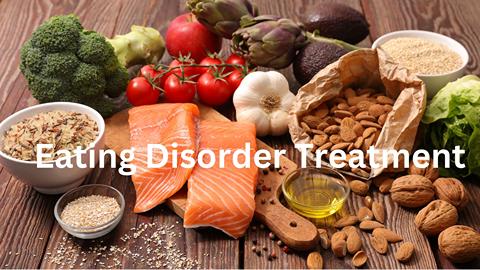
Understanding Eating Disorders
Eating disorders are so complex and oftentimes exist alongside co-occurring disorders, they require tailored programs to effectively treat all aspects of the self the body, mind, and spirit. Treatment for eating disorders involves psychological counseling, psychotherapy, medical care, nutritional therapy, and relapse prevention for comprehensive recovery that lasts. In addition to providing outstanding medical attention and therapy for eating disorder treatment. Eating disorder Treatment center proudly offers many holistic treatment therapies such as yoga, meditation, art therapy, equine therapy, life skills training, and more. Each individualized eating disorder program is provided by an expert multidisciplinary team including a psychiatrist, physician, registered dietician, nursing staff, and a master’s level eating disorder therapist.
What is an eating disorder?
An eating disorder is a serious, complicated mental health problem that has an impact on both one's emotional and physical well-being. Eating disorders cause people to form unhealthy relationships with food, their body weight, and their appearance. Eating disorders include anorexia, bulimia, and binge eating disorders.
Treatment exists for eating disorders. Eating disorders may lead to life-threatening issues in those who do not receive treatment.
How common are eating disorders?
An eating disorder affects approximately 20 million women and 10 million men in the United States.
Multiple complex factors, such as genetics, brain biology, personality, cultural and social ideals, and mental health issues, contribute to eating disorders.
What are the types of eating disorders?
There are different types of eating disorders. Some people may have more than one type of eating disorder. Types include:
- Anorexia nervosa:
Anorexia nervosa sufferers adhere to severe calorie and food restrictions, sometimes to the point of starvation. Any size can suffer from anorexia. It is characterized by an obsessive desire to shed pounds and a refusal to consume food in quantities that are appropriate for your body type and level of activity.
- Bulimia nervosa:
People who have been diagnosed with bulimia nervosa eat a lot or think they did eat a lot in a short amount of time. After that, they might try to force themselves to eliminate the calories by vomiting, taking a laxative, or exercising too much to get rid of the food and calories.
- Binge eating disorder (BED):
A person with a binge eating disorder experiences a loss of control over their eating. They eat a lot in a short amount of time, or they think they have eaten a lot. However, they do not exercise or eat less after overindulgence. Instead, they may experience feelings of shame, regret, guilt, or depression and feel uncomfortably full.
Who is at risk for eating disorders?
Any age can lead to eating disorders. All sexes, races, and ethnicities are affected. It is a myth that girls and women are more likely to develop eating disorders. Both boys and men are at risk. You may be more likely to develop an eating disorder if you have some of the following factors:
- A family history of addiction, eating disorders, or other mental health problems like depression.
- A past of physical, emotional, or sexual trauma
- Anxiety, depression, or obsessive-compulsive disorder (OCD) history
- Dietary history
What causes eating disorders?
Eating disorders are caused by a combination of genetics, the environment, and social factors. When other aspects of their lives seem out of control, some people with eating disorders may resort to extreme food control measures.A bad way to deal with bad feelings or emotions is to become food obsessed. Therefore, eating disorders are less about food than they are about finding healthy ways to control your emotions.
What are the symptoms of eating disorders?
A person's appearance does not always indicate that they have an eating disorder. Eating disorders can affect anyone, regardless of their weight or size. People with eating disorders frequently have an effect on how they think about or relate to food, which is not reflected in their size or weight.
Each type of eating disorder has distinct symptoms. An eating disorder can be hard to spot because it often looks like dieting. Or, a person with an eating disorder may be reluctant to talk about their issues with their eating. You may notice the following general changes if you or a loved one suffers from an eating disorder:
- Mood changes
- Dizziness, fainting, or fatigue
- loss of hair or hair thinning
- Frequent trips to the bathroom after eating.
- Weight changes that are not explained or significant weight loss.
- Unusually hot flashes or sweating.
How is an eating disorder diagnosed?
Eating disorders are diagnosed by healthcare professionals like doctors and mental health professionals. A physical examination, a review of your symptoms, and blood tests may all be ordered by your primary care physician. A psychological evaluation is carried out by a mental health counselor, such as a psychologist or psychiatrist, to learn more about your eating habits and beliefs.
The Diagnostic and Statistical Manual of Mental Disorders (DSM) is the diagnostic tool utilized by providers. Each eating disorder's symptoms are outlined in the DSM. An eating disorder diagnosis does not necessitate having every symptom. Additionally, you may still require assistance overcoming food-related issues even if you do not have a specific eating disorder listed in the DSM.

Comments (0)